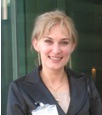
Plenary Lecture
Failure Behavior of Metal-Ceramic Dental Restorations Processed by Digital Technologies

Professor Liliana Porojan
Department of Prostheses Technology
Specialization Dental Technology
University School of Dentistry
"V. Babeș" University of Medicine and Pharmacy Timișoara
Romania
E-mail: lilianasandu@gmail.com
Abstract: Base metal alloys are still wide used in the technology of fixed dental prosthesis because of their excellent mechanical properties and low production costs. Processing of dental alloys can markedly affect the mechanical properties of the resulting components. Therefore it should be carefully controlled to obtain the desired quality. Although casting remains the traditional processes used to manufacture metallic restorations, nowadays digitized methods are being accepted as the novel candidates for the fabrication and evaluation of customized dental prostheses. Metal-ceramic restorations have been the main base of fixed dental prostheses for a long time. These kinds of restorations combine good mechanical properties of the metal with the good aesthetic ceramic properties. Even the porcelain fused to metal restorations are the ones widespread in practice, recently different manufacturing procedures develop as alternatives to classic ones, both for the frameworks and for the veneers.
The objective of the experiments was to assess the fracture behavior of metal-ceramic molar crowns obtained with laser-based additive manufacturing methods, related to other manufacturing procedures of the metallic frameworks, like conventional casting, and computerized milling. The detection of failure is a critical point in experimental analyses and is difficult to correlate with clinical failures because of the multitude of parameters involved in oral environment. However, mechanical analyses and biomechanical simulations continue to represent methods of choice for the failure evaluation of dental restorations. Metal-ceramic restorations with frameworks obtained with laser-based additive manufacturing methods exhibit similar fracture resistance to other manufacturing procedures of the metallic frameworks, like conventional casting, and computerized milling. The advantage of laser-based additive manufacturing procedures is that the mechanical properties could be improved and customized by optimizing and preserving the processing parameters.
This work was supported by a grant of the Romanian National Authority for Scientific Research and Innovation CNCS-UEFISCDI, project number PN-II-RU-TE-2014-4-0476.
Brief Biography of the Speaker: Liliana Porojan - Professor at the "Victor Babeș" University of Medicine and Pharmacy Timisoara, Faculty of Dentistry, Specialization Dental Technology, Department of Dental Prostheses Technology, PhD in dentistry, Primary dentist in General Dentistry specialty, Specialist in the specialty of Orthodontics and Dental-Facial Orthopedics , Specialist in specialty Dental Prosthodontics.
The areas of research are focused on: tridimenional reconstructions of dental structures and prosthetic restorations, threedimensional modeling, computer aided design in the field of dental prosthodontics, numerical simulations (finite element analysis) in fixed prosthetics, removable and combined restaurations, design optimization, modern welding procedures of dental alloys in shielding gas, structural aspects of base metal alloys, design concepts of removable partial dentures, attachments used in combined prosthetic restorations, ceramic systems used in dental technology, CAD / CAM systems used in dental technology. They were evidenced by coordination of 6 research projects in this areas of interest. The dissemination of research results was done by: 13 published books and monographs, 10 published courses and practical work handbooks, 164 scientific papers published in extenso, 160 papers published in summary, 221 papers presented at scientific meetings, 92 participation in conferences and symposia, 33 courses and training programs.